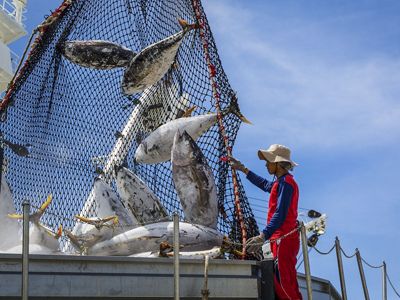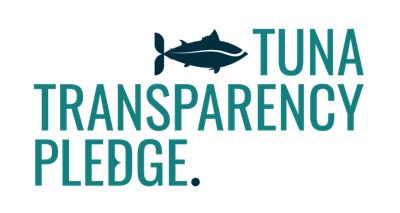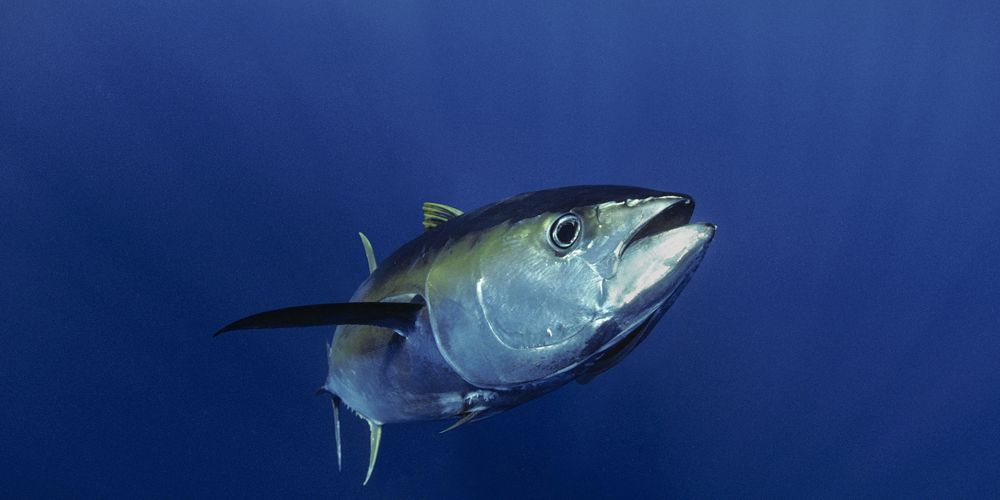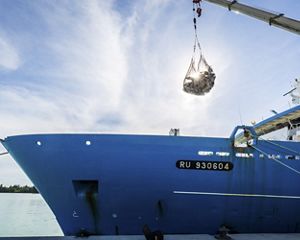Tuna Transparency Pledge
Tackling IUU fishing together by increasing #EyesOnTuna

#EyesOnTuna
The Tuna Transparency Pledge is a global initiative aiming to unite actors throughout the supply chain to achieve 100% on-the-water monitoring on all industrial tuna vessels by 2027.

Background
-
Three billion people worldwide rely on seafood for protein
That's equivalent to 40% of the global population. Yet 90% of global fisheries have reached their maximum sustainable levels.
-
Tuna is one of the most prized and popular fish
Each year, tuna fisheries produce five million tons of fish with a dockside value of $10 billion USD. But a lack of transparency is threatening global seafood supply, harming coastal communities and undermining marine conservation efforts.
-
Join the Tuna Transparency Pledge
To protect this valuable supply chain, including the fishers, coastal communities and businesses who rely on it, companies and governments around the world are joining the Tuna Transparency Pledge.
Industrial fishing occurs on more than half of the ocean’s surface—more than three times the area covered by land-based agriculture. Three billion people worldwide rely on seafood as a significant source of protein. As demand for these products increases to meet the needs of nearly 10 billion people over the next 30 years, so too does the pressure placed on critical marine ecosystems and the species that depend on them. Already, 90% of global fisheries have reached their maximum sustainable levels.
Tuna ranks as one of the most prized and popular fish in the world with five million tons of fish produced annually and a dockside value of $10 billion USD. One of the biggest obstacles to sustainably managing global tuna fisheries, protecting ocean wildlife, and delivering tuna products that inspire consumer confidence is lack of on-the-water monitoring and data. Often, fisheries authorities and supply chain actors do not have the data needed to ensure that the vessels they source from are complying with fishing regulations and social standards.
Many technological advances have enabled fishery managers to better understand what is happening at sea, but without independent monitoring on vessels to verify catch activity, it is difficult to identify when illegal, unreported, and unregulated (IUU) fishing activity is occurring within the first mile of the supply chain. Companies that are unable to verify compliance with environmental and social standards risk losing business, in addition to creating operational and business risks throughout the supply chain.
Quote: Ben Gilmer
We cannot afford to ignore the urgent need for action to protect ocean wildlife, tuna stocks, and the communities that rely on them. On-the-water monitoring technology is ready to scale today and helps ensure that the seafood on shelves has has been harvested in compliance with fishery laws.
Having eyes on the water allows markets to have confidence that industrial tuna fishing activities were sourced legally and sustainably. In addition, on-the-water monitoring helps to level the playing field for the many law abiding fishers around the globe.
Through the Tuna Transparency Pledge, TNC aims to unite key players across the seafood supply chain—including companies and governments—to help accelerate the adoption of on-the-water monitoring. Electronic monitoring—the use of onboard video cameras, GPS, and sensors to monitor and verify fishing activities—and human observers can strengthen transparency and provide critical data needed for the sustainable management of tuna and other ocean species.

Signatories
Since its launch in April 2024, the Tuna Transparency Pledge has grown significantly to include major retailers, suppliers and food service companies across North America and Europe, as well as governments. Signatories include Walmart, Thai Union, Carrefour, Albertsons Companies, Aramark, Oddisea SuperFrozen, Lusamerica Foods, Pacific Island Tuna, Walker’s Tuna, Association of Large Freezer Tuna Vessels (AGAC), Belize, the Federated States of Micronesia, the Republic of the Marshall Islands, Papua New Guinea, Palau and Panama.

Join the Pledge
The Tuna Transparency Pledge was developed by TNC in consultancy with other leading NGOs, retailers, and seafood experts. TNC works in collaboration with signatories and their NGO partners to track progress and support their rollout and verification procedures.
Retailers, seafood suppliers, and governments can get involved in this initiative by signing onto the Tuna Transparency Pledge and demonstrating leadership toward the industry's future of 100 percent on-the-water monitoring on all industrial tuna fishing vessels. Major retailers, food service, and hospitality sectors, together with tuna suppliers, processors and distributors, can use their purchasing power to drive innovation and transparency in their supply chains so that customers can confidently buy tuna products that were harvested sustainably and legally. By advocating for the adoption of robust on-the-water monitoring through the Tuna Transparency Pledge, industry leaders can help guarantee a long-term and sustainable seafood supply for the market.
Contact
Let’s Get #EyesOnTuna
TNC is seeking signatories from other major seafood buyers, seafood supply chain companies and governments to help drive industry-wide transformation. Those interested in building this positive industry change should email us.

The Tuna Transparency Pledge
The Tuna Transparency Pledge is a global initiative led by The Nature Conservancy—with support from various NGO, industry and governmental collaborators—that aims to achieve 100% on-the-water monitoring (via electronic monitoring and/or human observers) across all industrial tuna fishing vessels. With a vision of a thriving global marine environment that provides stable and sustainable seafood supplies, the Tuna Transparency Pledge was created to guide and unite companies and governments to lay the foundation for a more resilient and transparent tuna supply chain.


